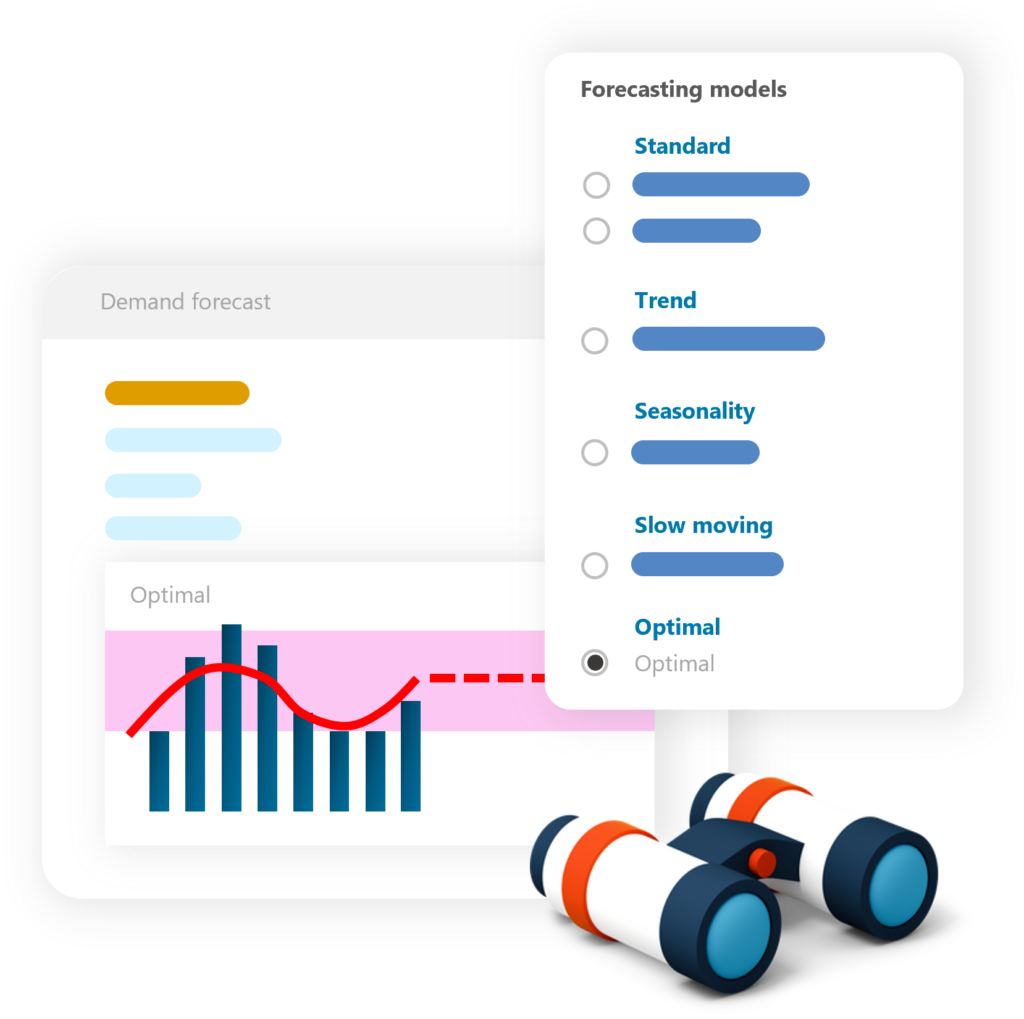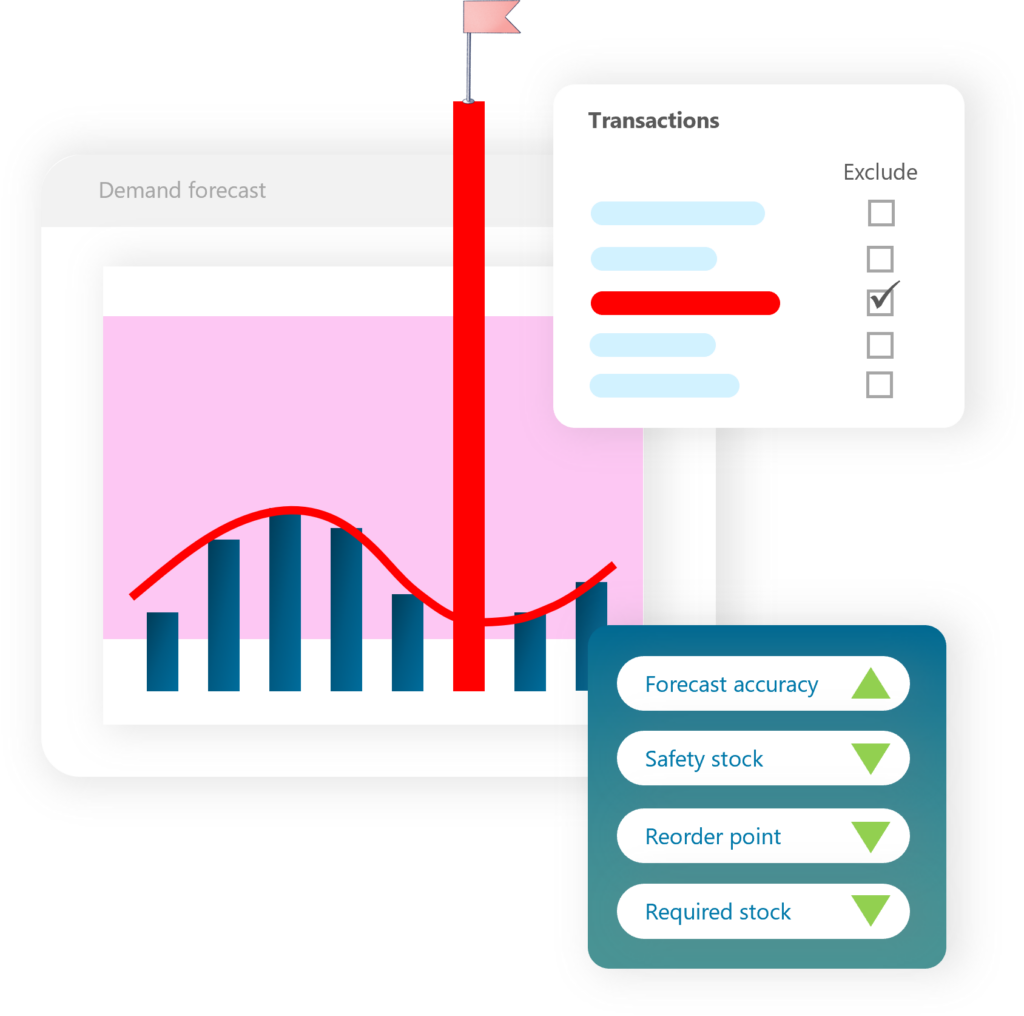Predict your demand accurately
Lanza contains different types of planning and forecasting techniques, suitable for each individual situation. Think of slow mover forecasting, demand trends, seasonality, NPI’s, etc. Discover how to predict your spare parts demand.


Pick the best forecasting technique
We distinguish between reactive and proactive demand forecasting. Reactive forecasting creates a prediction based on historical demand. There is a wide range of statistical methods to be applied. Think of Moving Average, Smoothing techniques, but also dedicated slow mover forecasting techniques. Lanza also copes with trend demand, lumpy demand and even seasonal demand.
Although we have best practices available for every type of situation, Lanza allows you to pick the optimal one based on the forecast error.
Get rid of outliers
We all know, rubish in is rubish out. Demand forecasting on unreliable demand data does not give you the value you want. Lanza allows you to quickly identify outliers and enables you to clean up the data before starting demand forecasting. This way, you always have accurate demand forecasts as input for your stock calculation.


Enrich with proactive forecasting
When historical demand as your demand source is not good enough you can enrich your planning with proactive information. Think of planned maintenance schedules turned into part reservations, engineering based information like MTBF/MTB(U)R, Bill of Materials and running hours, or even stochastical Bill of Materials that keep track of probabilities that parts have to be replaced with a given job.
Ultimately, when the source of information is available in your ERP system or even a side administration Lanza brings it into play for you to have the most accurate demand planning.








